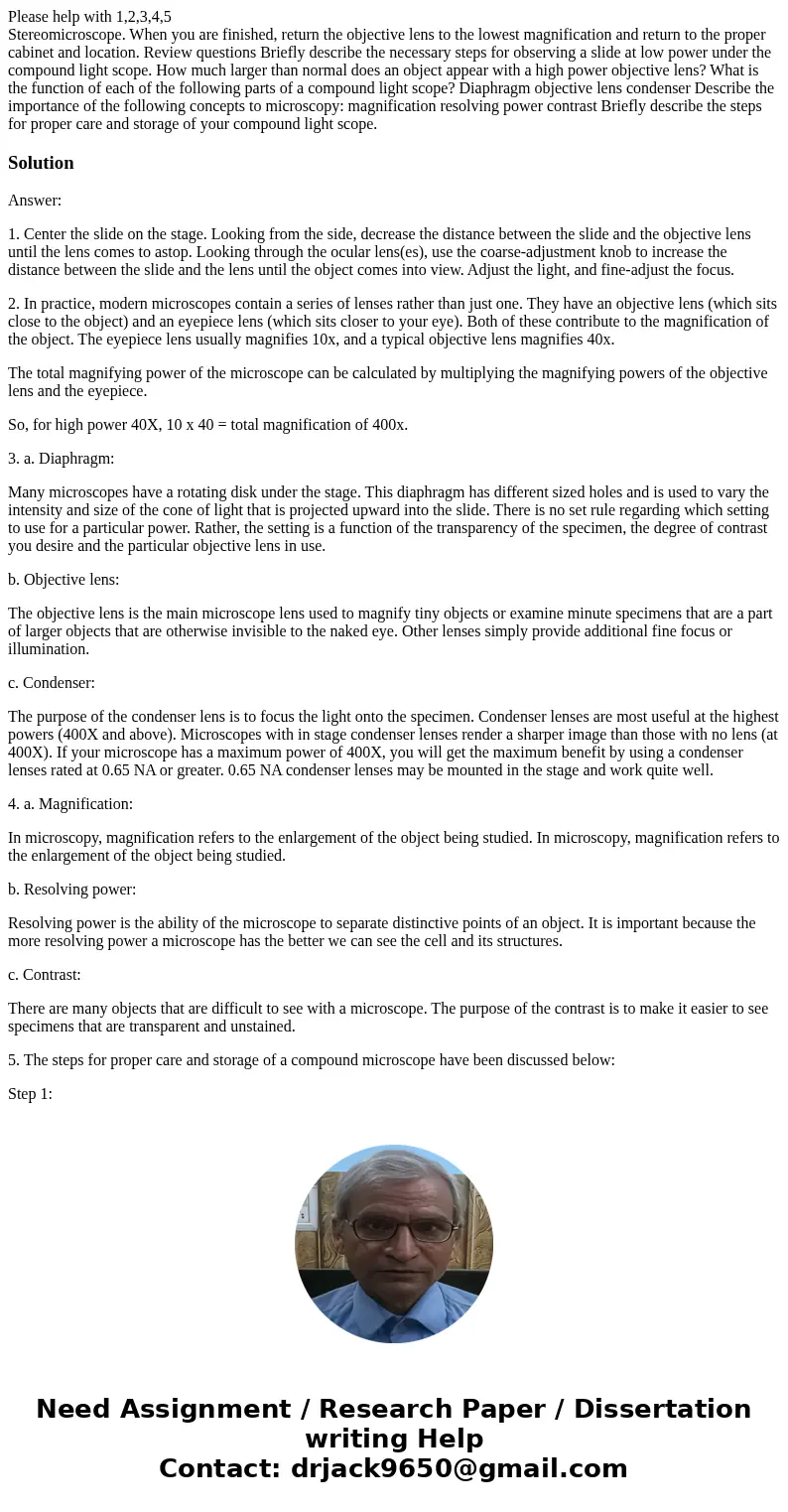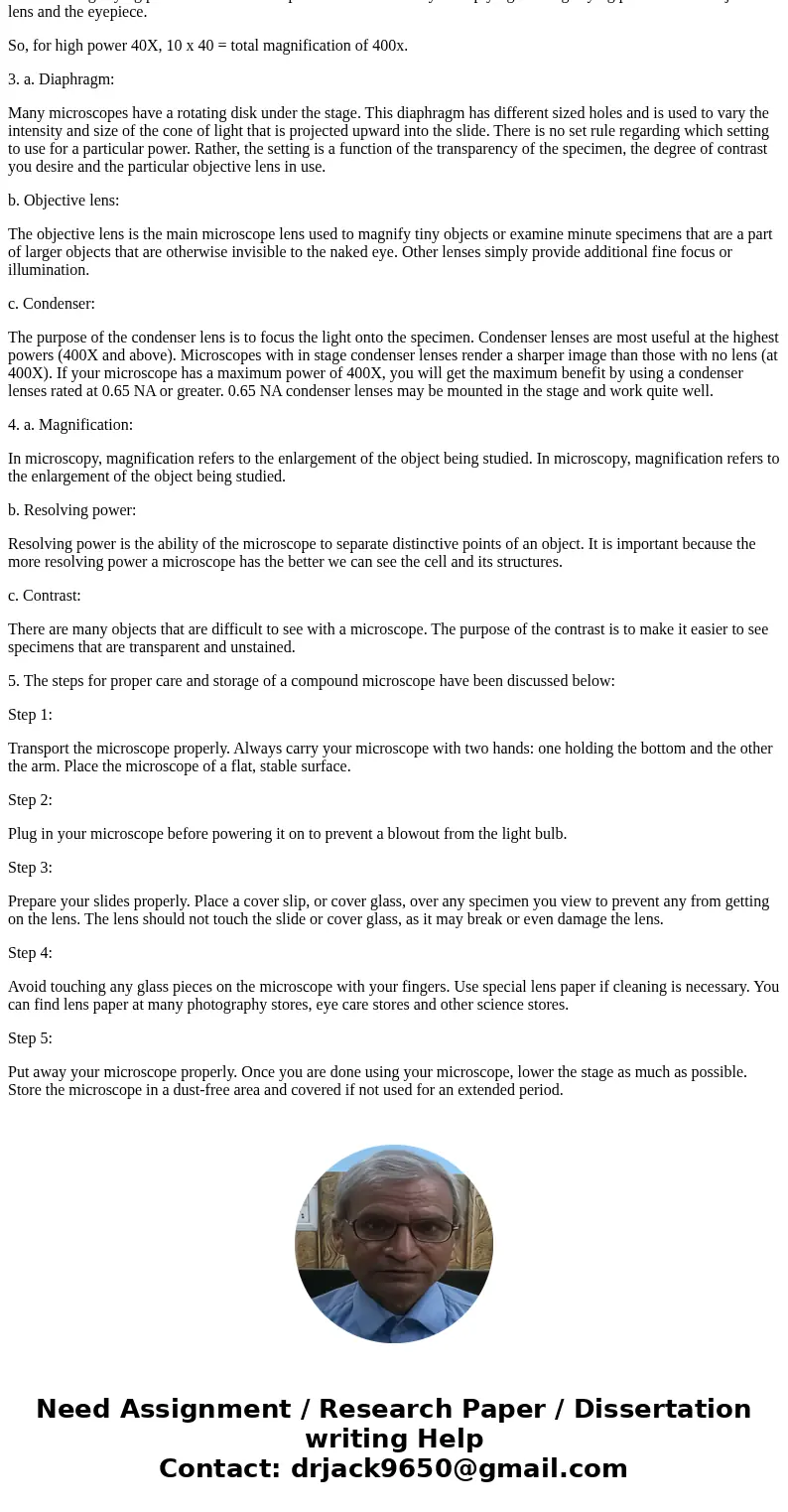Please help with 12345 Stereomicroscope When you are finishe
Solution
Answer:
1. Center the slide on the stage. Looking from the side, decrease the distance between the slide and the objective lens until the lens comes to astop. Looking through the ocular lens(es), use the coarse-adjustment knob to increase the distance between the slide and the lens until the object comes into view. Adjust the light, and fine-adjust the focus.
2. In practice, modern microscopes contain a series of lenses rather than just one. They have an objective lens (which sits close to the object) and an eyepiece lens (which sits closer to your eye). Both of these contribute to the magnification of the object. The eyepiece lens usually magnifies 10x, and a typical objective lens magnifies 40x.
The total magnifying power of the microscope can be calculated by multiplying the magnifying powers of the objective lens and the eyepiece.
So, for high power 40X, 10 x 40 = total magnification of 400x.
3. a. Diaphragm:
Many microscopes have a rotating disk under the stage. This diaphragm has different sized holes and is used to vary the intensity and size of the cone of light that is projected upward into the slide. There is no set rule regarding which setting to use for a particular power. Rather, the setting is a function of the transparency of the specimen, the degree of contrast you desire and the particular objective lens in use.
b. Objective lens:
The objective lens is the main microscope lens used to magnify tiny objects or examine minute specimens that are a part of larger objects that are otherwise invisible to the naked eye. Other lenses simply provide additional fine focus or illumination.
c. Condenser:
The purpose of the condenser lens is to focus the light onto the specimen. Condenser lenses are most useful at the highest powers (400X and above). Microscopes with in stage condenser lenses render a sharper image than those with no lens (at 400X). If your microscope has a maximum power of 400X, you will get the maximum benefit by using a condenser lenses rated at 0.65 NA or greater. 0.65 NA condenser lenses may be mounted in the stage and work quite well.
4. a. Magnification:
In microscopy, magnification refers to the enlargement of the object being studied. In microscopy, magnification refers to the enlargement of the object being studied.
b. Resolving power:
Resolving power is the ability of the microscope to separate distinctive points of an object. It is important because the more resolving power a microscope has the better we can see the cell and its structures.
c. Contrast:
There are many objects that are difficult to see with a microscope. The purpose of the contrast is to make it easier to see specimens that are transparent and unstained.
5. The steps for proper care and storage of a compound microscope have been discussed below:
Step 1:
Transport the microscope properly. Always carry your microscope with two hands: one holding the bottom and the other the arm. Place the microscope of a flat, stable surface.
Step 2:
Plug in your microscope before powering it on to prevent a blowout from the light bulb.
Step 3:
Prepare your slides properly. Place a cover slip, or cover glass, over any specimen you view to prevent any from getting on the lens. The lens should not touch the slide or cover glass, as it may break or even damage the lens.
Step 4:
Avoid touching any glass pieces on the microscope with your fingers. Use special lens paper if cleaning is necessary. You can find lens paper at many photography stores, eye care stores and other science stores.
Step 5:
Put away your microscope properly. Once you are done using your microscope, lower the stage as much as possible. Store the microscope in a dust-free area and covered if not used for an extended period.


 Homework Sourse
Homework Sourse